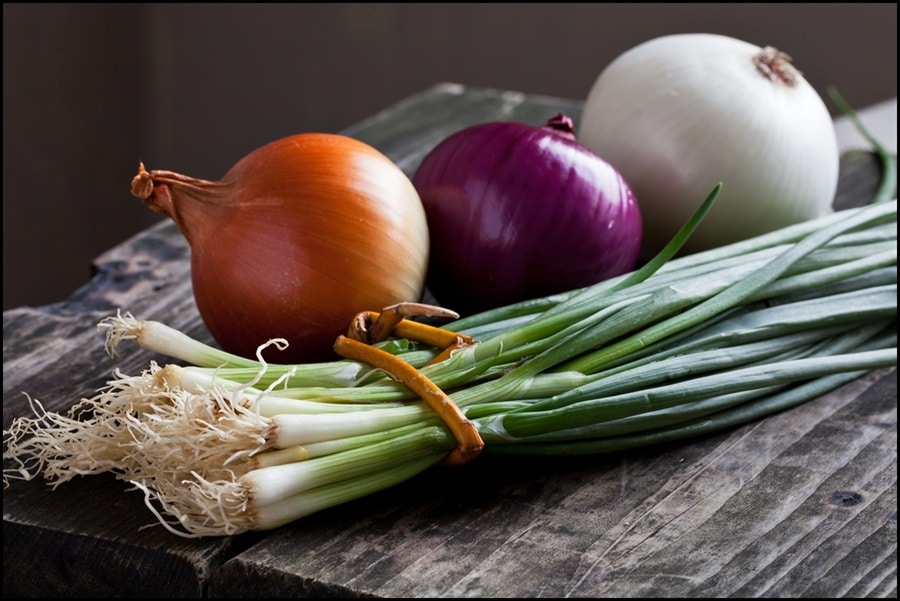Regarding culinary delights, not all foods are created equal, especially in their raw form. While some foods can be eaten with minimal preparation, others may pose serious health risks if consumed without proper cooking. This article delves into the dangers lurking in some common foods when eaten raw. The risks associated with these foods, from toxins to bacteria, are often unknown or overlooked. Understanding which foods to avoid eating raw is crucial for maintaining good health and preventing foodborne illnesses. This exploration into the less-talked-about side of our diet is an eye-opener for food enthusiasts and health-conscious individuals.
Contents
Potatoes

Potatoes, a staple in many diets, hide a little-known danger when consumed raw. This familiar tuber contains solanine, a natural toxin that can lead to nausea, diarrhea, and even neurological disorders. The concentration of solanine is particularly high in green or sprouted potatoes. Cooking potatoes significantly reduces their solanine levels, making them safe and enjoyable. Additionally, raw potatoes’ hard and starchy texture is unpalatable and difficult to digest. The transformation from a hard, potentially toxic tuber to a soft, savory dish highlights the magic of cooking and the importance of heat treatment in making foods safe.
Kidney Beans

Kidney beans are a nutritious addition to any diet but hide a potentially dangerous secret. Raw or improperly cooked kidney beans contain high amounts of lectins, particularly phytohaemagglutinin, which can cause severe gastrointestinal distress. Just a few raw beans can lead to symptoms like vomiting and diarrhea. The key to safely consuming kidney beans is proper preparation: soaking them for several hours and then boiling them in fresh water for at least ten minutes at 100°C. This process neutralizes the lectins, rendering the beans safe for consumption. The transformation from a potentially harmful bean to a nutrient-rich, digestible food exemplifies the power of proper food preparation.
Cassava (Yucca)

Cassava, or yucca, is a root vegetable widely consumed worldwide but poses serious health risks if eaten raw. Raw cassava contains cyanogenic glycosides, compounds that release cyanide when eaten. Long-term consumption of raw cassava can lead to chronic cyanide poisoning, with symptoms like dizziness, headaches, and thyroid dysfunction. The traditional cassava processing, which includes soaking, drying, and baking, effectively reduces the cyanide content, making it safe for consumption. When prepared correctly, this root vegetable is safe and versatile, serving as a staple in many cuisines and offering a gluten-free carbohydrate alternative.
Eggplant

Eggplant, a popular ingredient in various cuisines, should be cautiously used when raw. Similar to potatoes, eggplants contain solanine, although in lower amounts. Consuming raw eggplant can lead to gastrointestinal discomfort and may pose risks to individuals with certain health conditions. Cooking eggplant reduces its solanine content and transforms its spongy, bitter, raw state into a delicious, tender delicacy. The cooking process breaks down the eggplant’s cell walls, releasing its unique flavor and texture. Whether grilled, baked, or stewed, eggplant’s culinary versatility shines through once it is cooked.
Eggs

Eggs, a breakfast staple and key ingredient in many recipes harbor a hidden danger when consumed raw. The primary concern with raw eggs is the risk of Salmonella infection, a common cause of foodborne illness. The bacteria can reside both on the shell and inside the egg, posing a risk even when shells are uncracked. Cooking eggs until the whites and yolks are firm ensures the destruction of Salmonella. Pasteurized eggs are a safer alternative in recipes that call for raw eggs, like certain dressings or desserts. Pasteurized eggs have been heat-treated to kill bacteria without cooking the egg, offering a compromise between safety and culinary requirements.
Meat and Poultry

The consumption of raw or undercooked meat and poultry is a well-known health risk, primarily due to the potential presence of harmful bacteria like Salmonella and E. coli. These pathogens can cause severe gastrointestinal illnesses, with symptoms ranging from stomach cramps to life-threatening complications. Cooking meat and poultry to the recommended internal temperatures is crucial for killing these bacteria. The texture and flavor of meat and poultry also improve significantly upon cooking, transforming them into enjoyable and safe meal components. While certain dishes like steak tartare remain popular, they should be approached cautiously due to the inherent risks of consuming raw meat.
Milk

Raw milk, often touted for its natural and unprocessed qualities, carries significant health risks. The primary concern with consuming raw milk is the potential presence of harmful bacteria, such as Salmonella, E. coli, and Listeria. These pathogens can lead to serious illnesses, especially in vulnerable populations like pregnant women, young children, the elderly, and those with weakened immune systems. Pasteurization, the process of heating milk to a specific temperature to kill harmful bacteria, has been a public health triumph, significantly reducing milk-borne illnesses. While the debate over the nutritional differences between raw and pasteurized milk continues, the safety benefits of pasteurization are clear and well-documented.
Mushrooms

Mushrooms, a favorite in various cuisines, should be consumed cautiously when raw. Certain varieties of mushrooms contain toxins that can cause stomach upset or more severe health issues. Cooking mushrooms reduces their potential toxicity, enhances their flavor, and makes them more digestible. The risks associated with raw mushrooms extend beyond toxicity; collecting wild mushrooms without proper knowledge can lead to accidental poisoning. Consuming mushrooms sourced from reliable suppliers and cooked properly is always safer, ensuring both safety and a delightful culinary experience.
Fish and Seafood

Raw fish and seafood, popular in dishes like sushi and ceviche, carry risks that should not be overlooked. Parasites, bacteria, and viruses can be present in raw fish and seafood, posing health risks like food poisoning and parasitic infections. Freezing fish and seafood at specific temperatures can kill parasites, making it safer for raw consumption, a practice commonly followed in sushi-grade fish. However, the risk of bacterial contamination remains. Proper handling, storage, and sourcing of fish and seafood are crucial for reducing these risks. While raw fish dishes are a delicacy, they should be consumed cautiously, especially by vulnerable individuals.
The Bottom Line
The journey through the world of foods that should never be eaten raw reveals a complex interplay between culinary practices and food safety. Each item on this list carries unique risks when consumed raw, from potatoes to flour. The act of cooking transforms these foods into delicious components of our meals. It plays a critical role in ensuring their safety. Understanding the dangers of certain raw foods is essential for making informed dietary choices and protecting one’s health. As we navigate the diverse food landscape, it becomes clear that knowledge and caution are key ingredients in the recipe for a safe and enjoyable eating experience.


